

Cape Verde, a captivating archipelago of ten islands nestled in the central Atlantic Ocean, beckons travelers year-round with its remarkably consistent tropical climate. Understanding the subtle yet significant variations in Cape Verde weather across the seasons is crucial for tailoring your ideal escape, whether you envision languid days on pristine beaches, thrilling adventures in the azure waters, or an immersive experience in the islands’ unique cultural tapestry and natural wonders. With average annual temperatures ranging between a pleasant 24°C and 30°C, Cape Verde offers long, uninterrupted hours of sunshine and low humidity, enticing visitors to return time and again.
The arrival of Spring in Cape Verde, spanning from February to May, heralds a period of exceptionally agreeable Cape Verde weather. Expect consistently hot, long, and brilliantly bright days, with average daily maximum temperatures comfortably settling around 26°C. Notably, the days in Spring are longer than in Summer, offering more daylight for exploration. While the season boasts approximately seven hours of direct sunlight each day, the extended daylight hours mean you can enjoy activities well into the late afternoon before the refreshing coolness of the evenings sets in. This period is particularly cherished by visitors seeking to avoid rainfall, as the spring months are typically dry. February is often highlighted as the best month to travel due to its cooler temperatures compared to other times of the year within this generally hot climate.
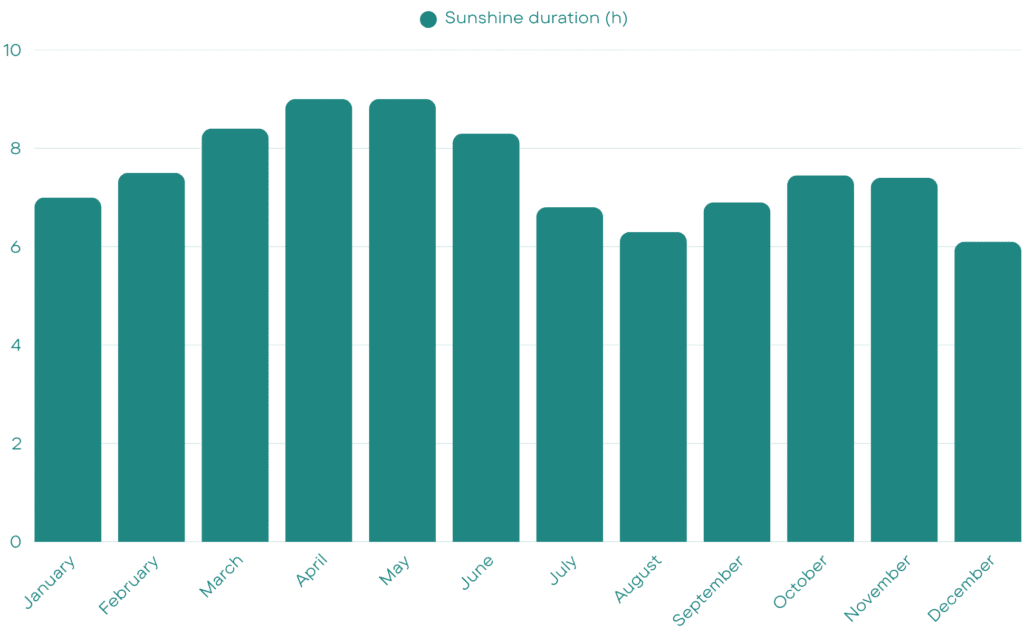
Beyond the inviting Cape Verde weather, Spring offers an opportune time to explore the diverse landscapes and cultural events of the islands. February, in particular, comes alive with Cape Verde’s famous Carnival celebrations. The festivities in Mindelo on the island of São Vicente are a daily spectacle, offering a vibrant immersion into local traditions. With comfortable average maximum temperatures of 25°C in February and sea temperatures averaging a pleasant 23°C, it’s also an excellent time for water sports enthusiasts. March continues to provide ideal conditions for water sports, boasting an average of ten hours of sunshine per day and temperatures around 25°C. This makes it a wonderful time to escape the tail end of a harsher European spring and soak up some much-needed vitamin D while exploring the rugged interiors or enjoying day trips without excessive heat.
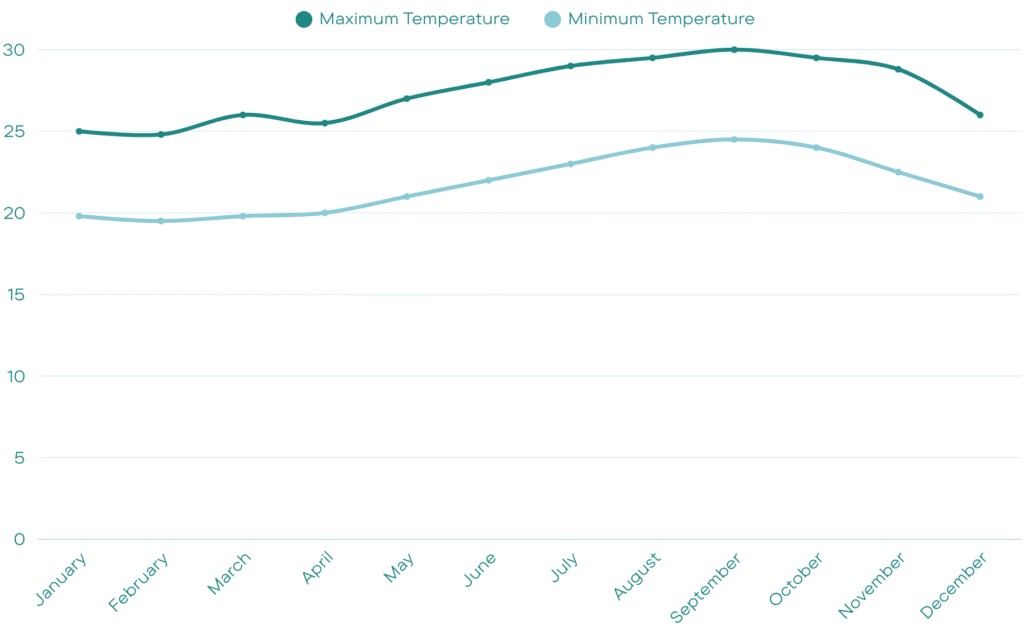
Summer in Cape Verde, encompassing June to August, is characterized by its reliably hot and dry conditions, though with slightly shorter sunshine hours averaging around five per day across the season. Daytime temperatures generally range from a warm 24°C to 27°C. Rainfall is minimal during June and July, with average precipitation of only 3mm and 5mm respectively. August sees a slight increase to around 15mm, but the likelihood of being caught in a significant summer shower remains fairly low. The warmth of the islands is almost uninterrupted by rainfall during these months, making it ideal for those seeking consistent sunshine.

The summer months are perfect for indulging in the coastal pleasures of Cape Verde. The sea temperatures become increasingly inviting, averaging 26°C in July and a tempting 27°C in August, ideal for swimming and various water activities. While June sees a slight drop in sunshine hours, the temperature rises again, and rainfall remains minimal. It’s another excellent time for beach lovers and those who prefer relaxing by the pool. Towards the end of June, the winds tend to diminish further, creating even calmer conditions. It’s worth noting that July can occasionally bring dust storms, which might temporarily affect beach activities, but these storms usually pass quickly, often in less than 20 minutes.
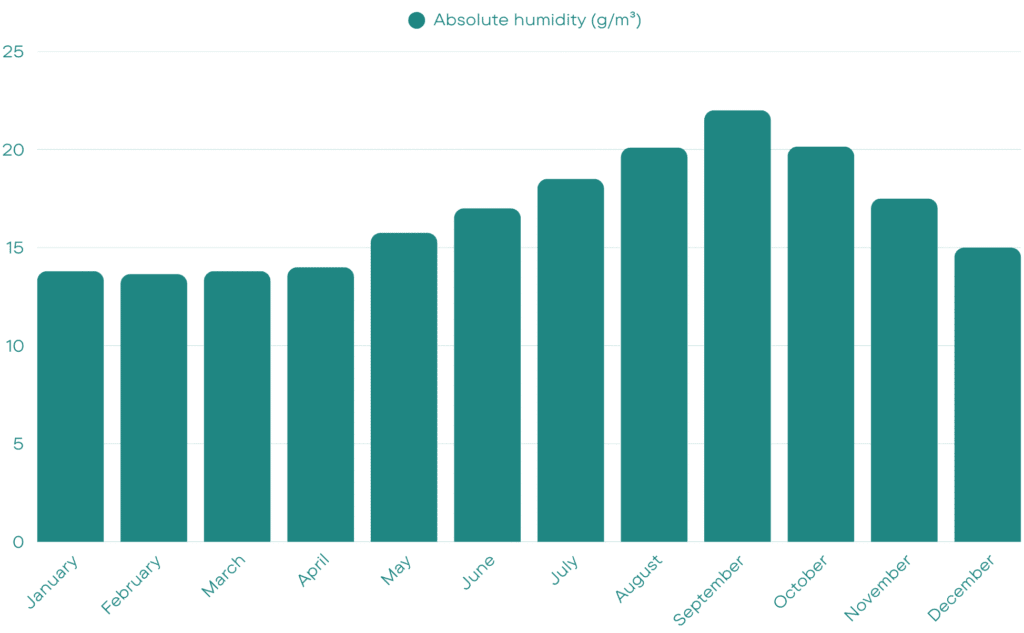
As the heat of summer gradually transitions into autumn (September to November), the Cape Verde weather undergoes its most significant shift, marking the islands’ rainy season. September typically records the highest amount of annual rainfall, contributing almost half of the islands’ average yearly precipitation. However, this period also coincides with the warmest temperatures of the year, with average highs ranging from 26°C to 28°C and daily maximums occasionally soaring to 29°C or even 30°C. While the climate adopts a more tropical feel with intermittent showers, the warmth persists, offering a unique blend of sunshine and refreshing rain.
Autumn in Cape Verde is not solely defined by the changing Cape Verde weather; it’s also a time of cultural events and the warmest sea temperatures. September, despite being the rainiest month, hosts various festivals and events. If your holiday isn’t disrupted by occasional showers, you might enjoy the music festival in Santa Maria during mid-September or the vibrant Nationality Day celebrations.
October sees a decrease in expected rainfall, similar to August, and the winds die down. The maximum temperature averages around 29°C, with about seven hours of sunshine mixed with sporadic tropical showers, making the weather somewhat unpredictable but still generally warm. November marks the beginning of the winter season, with average highs around 28°C. The winds start to pick up during this time, leading to larger waves on some islands, which becomes particularly popular with windsurfers, kitesurfers, and sailors. Even if you’re not keen on water sports, this can still be a great time to visit, and beaches often have flag systems indicating swimming conditions.
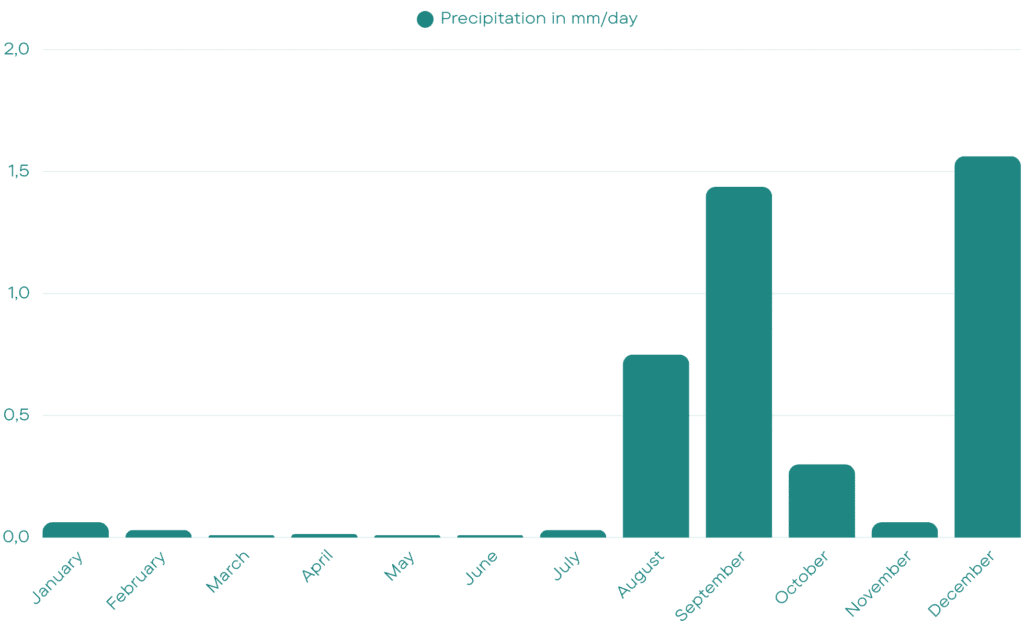
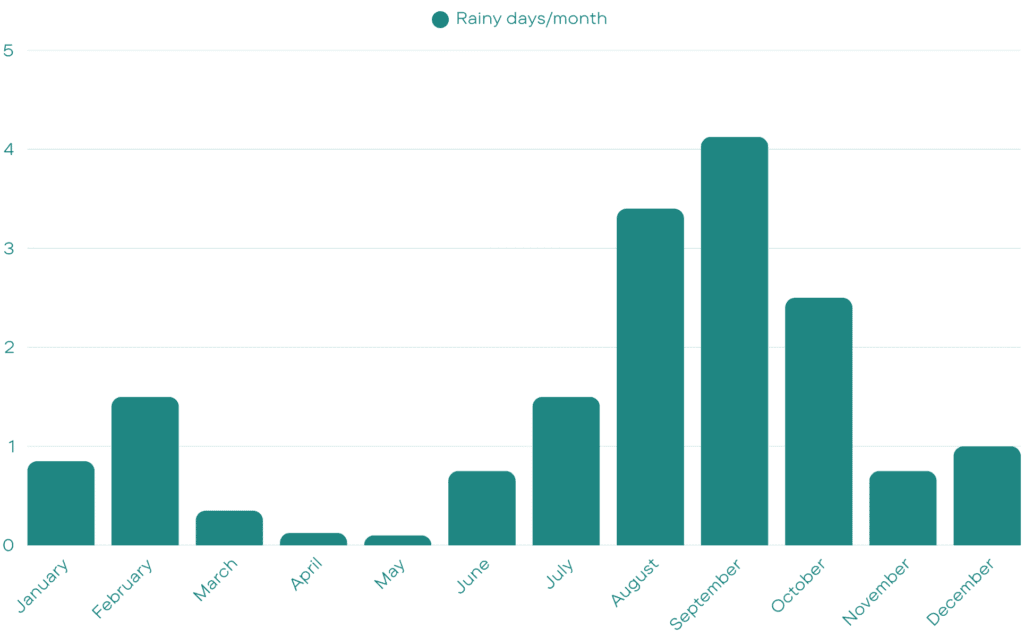
The arrival of winter (December to February) brings a welcome respite from the brief rainy season, with rainfall significantly diminishing to around 10mm in December and just 3mm in January. While these months are considered the coolest in Cape Verde, the temperatures remain pleasantly mild, ranging from 21°C to 26°C – still considerably warmer than many European winters.
Similar to summer, the winter days are shorter than spring or autumn, offering around six hours of sunshine daily. January is often cited as Cape Verde’s coldest month, yet it still boasts pleasant temperatures up to 24°C and an average of eight sunshine hours a day, making it ideal for adventurers looking to explore the more rugged, mountainous islands like Santo Antão and São Nicolau. December offers a warmer, dryer feel during the festive month, with average highs of 27°C and minimal expected precipitation, guaranteeing sunshine for beach lovers and families.
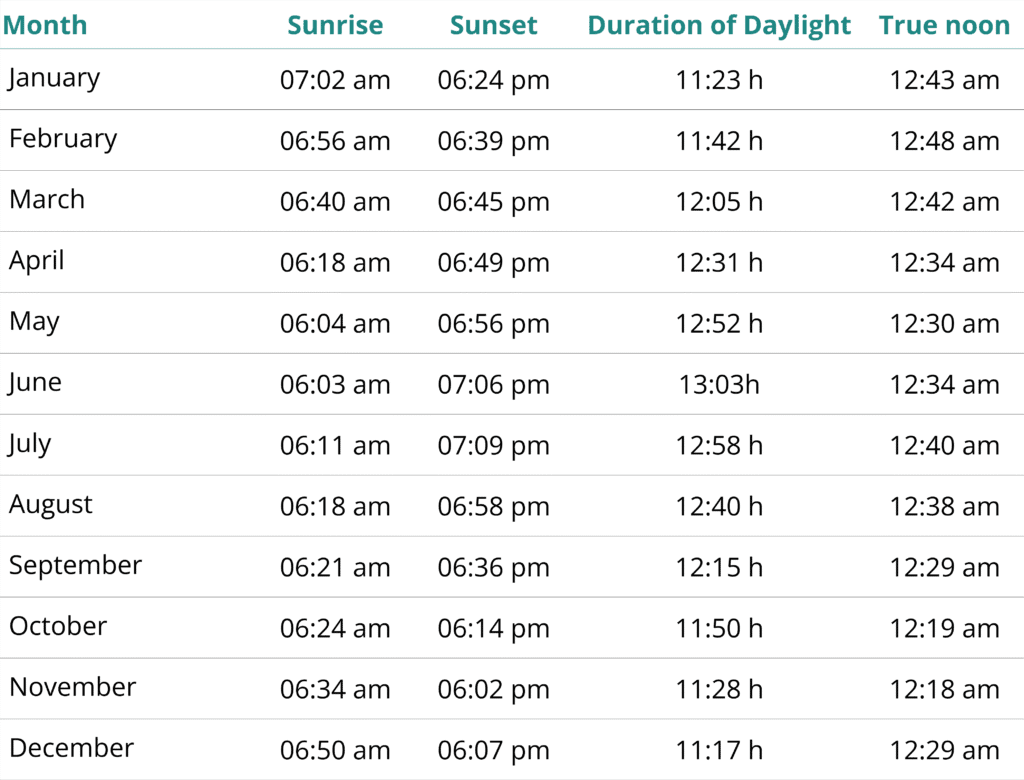
The mild Cape Verde weather of winter is perfect for venturing beyond the beaches and discovering the diverse interiors of the islands. The cooler temperatures make activities like hiking and exploring historical sites more comfortable. Consider trekking through the stunning landscapes of Santo Antão, visiting the UNESCO World Heritage site of Cidade Velha on Santiago, or exploring the unique salt mines of Pedra de Lume on Sal. The sea temperatures remain agreeable for those interested in water activities, averaging 23°C in February. The longer nights of December, lasting almost 13 hours in Praia, contrast with the shorter daylight hours, offering a different rhythm to the day compared to the summer months.
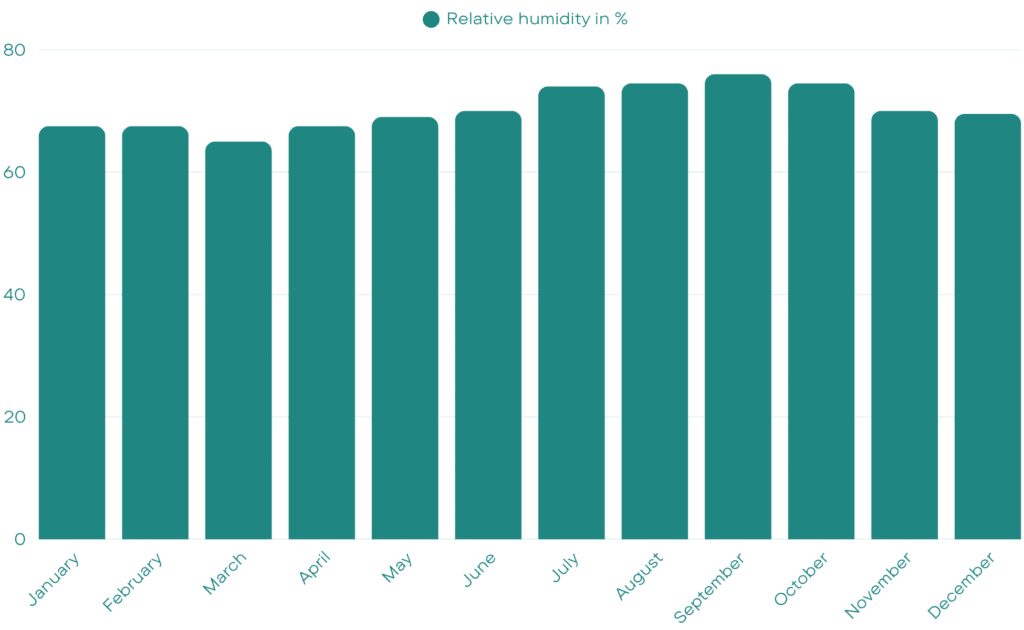
The enduring appeal of Cape Verde extends far beyond its consistently agreeable Cape Verde weather. The archipelago boasts a captivating blend of natural beauty, unique ecosystems, and a rich cultural heritage shaped by its Creole identity and historical significance as a resupply point for ships in the 19th century. The isolated location of the islands has led to the development of several endemic species, particularly birds and reptiles, making it a fascinating destination for nature enthusiasts. The service-centered economy, with a growing focus on tourism and foreign investment, reflects the islands’ welcoming nature. Furthermore, Cape Verde has made significant strides in renewable energy, with wind farms on four islands contributing about 25% of the country’s electricity, positioning it as a leader in this sector.
Imagine waking up to the gentle kiss of the sun in Cape Verde, where even the shortest winter days offer a generous stretch of golden light! Planning your island adventures is a breeze when you know just when the sun graces the horizon and when it dips below. The chart below is your personal guide to the Cape Verdean day, month by month. Picture longer, sun-drenched days perfect for exploring every hidden cove and volcanic peak as summer approaches, and cozy evenings that invite starlit dinners as winter rolls around. Knowing these daylight hours, conveniently detailed after our winter weather chat, helps you squeeze every drop of joy from your tropical escape.

Imagine waking up to the gentle kiss of the sun in Cape Verde, where even the shortest winter days offer a generous stretch of golden light! Planning your island adventures is a breeze when you know just when the sun graces the horizon and when it dips below. The chart below is your personal guide to the Cape Verdean day, month by month. Picture longer, sun-drenched days perfect for exploring every hidden cove and volcanic peak as summer approaches, and cozy evenings that invite starlit dinners as winter rolls around. Knowing these daylight hours, conveniently detailed after our winter weather chat, helps you squeeze every drop of joy from your tropical escape.
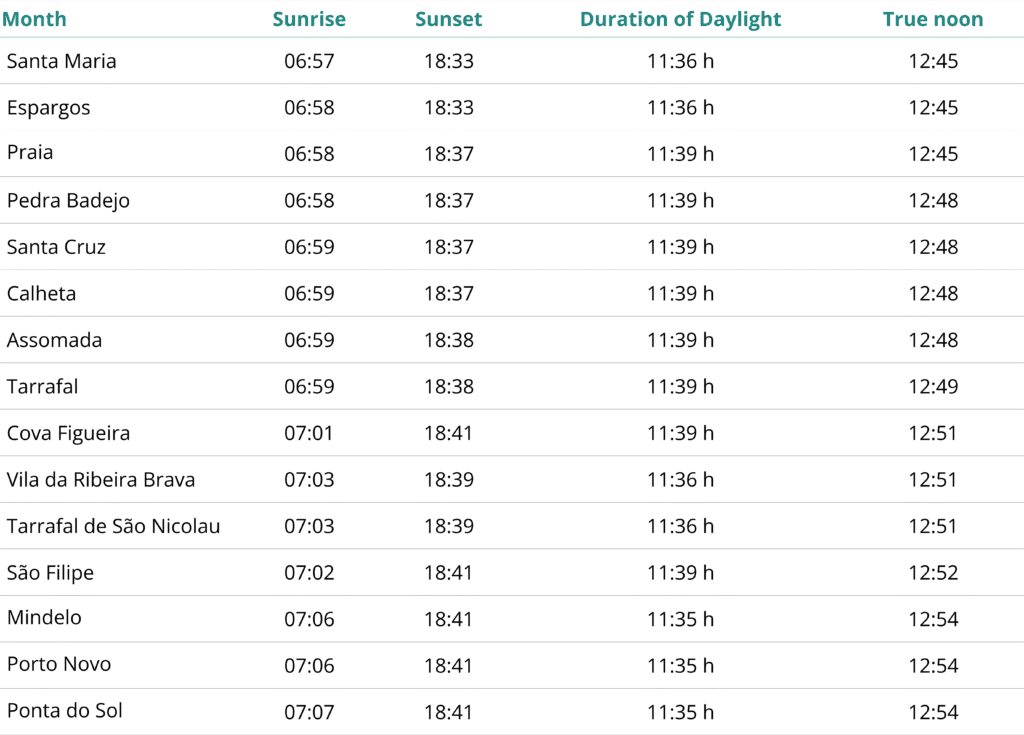
Imagine stepping onto the shores of Cape Verde, where every season paints a unique masterpiece! Forget endless research – we’ve unwrapped the secrets of its captivating climate, guiding you to your perfect island escape. Crave sun-drenched adventures in the reliably hot and dry late spring? Picture balmy summer days melting into starlit nights. Or perhaps the vibrant, refreshing touch of tropical autumn calls to you? Even winter here is a gentle hug of mild, sunny days, ideal for exploring hidden gems. No matter your dream vacation, Cape Verde whispers promises of unforgettable moments and enriching discoveries, tailor-made just for you. So, which vibrant season will you choose for your captivating escape?
Sorry. Due to Copyright, you cannot copy content.
